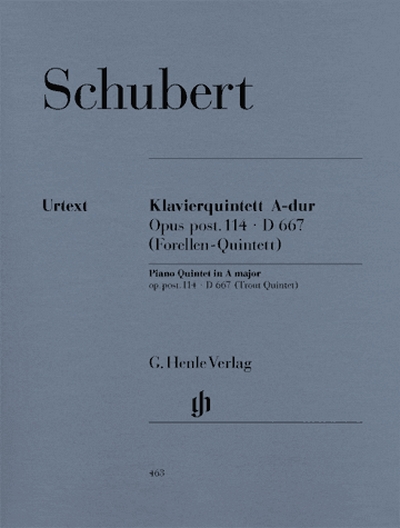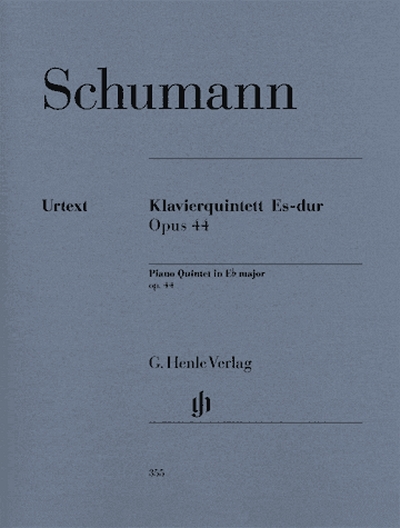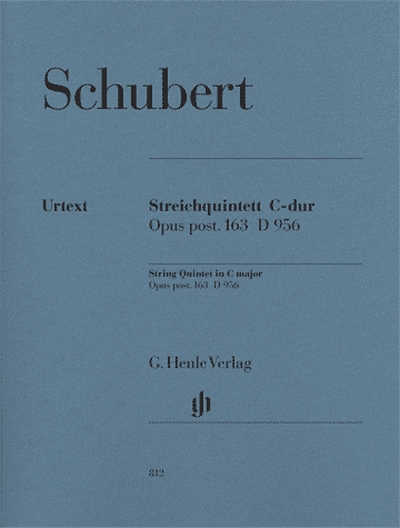Chamber Music Cello, Flute, Viola 1, Viola 2, Violin
SKU: CF.MXE219
Composed by Wolfgang Amadeus Mozart. Arranged by Robert Stallman. Sws. 56+16+16+16+16+12 pages. Carl Fischer Music #MXE219. Published by Carl Fischer Music (CF.MXE219).
ISBN 9781491157794. UPC: 680160916399. 9 x 12 inches.
Preface In 1990, during an intense rehearsal of a Mozart Quartet transcription for flute and strings by Franz Anton Hoffmeister, at the Marblehead Summer Music Festival, a disgruntled violist friend complained about HoffmeisterAs awkward string writing, suddenly daring me to create my own arrangement. I balked. But the following winterA3despite scruples about treading on hallowed groundA3I grew curious and began to experiment. Soon I was hooked on the challenge of learning to speak MozartAs language with conviction. This fascination, encouraged by pianist Richard Goode and other Mozarteans, would eventually generate a total of thirty-nine recreations of Mozart piano sonatas as works for flute and strings. With zero tolerance for alteration of melodic or harmonic materialA3MozartAs friend Hoffmeister had regrettably attempted such A!improvementsA(r)A3I always tried to envision what Mozart himself would have desired. Many of the sonatas can be heard as if they were MozartAs A!blueprintsA(r) of imagined chamber works. Hence my task was to A!flesh outA(r) the keyboard versions as Mozart might have done, had a commission or performance opportunity arisen. I spent hours pondering how Mozart might have set these sonatas in four- or five-part form, providing the needed textural or contrapuntal enhancements. With immersion in the composerAs dialect, various apt solutions presented themselves. The search for the A!rightA(r) one then became a most absorbing study. On the eve of releasing my BognerAs CafA recording of Mozart-Stallman New Quintets (2006), I discovered to my delight that a prominent scholar had long before endorsed such an effort. Eric Blom (1888A+-1959), author of Mozart (1935), had taken note of the four-hand piano works as A!a kind of keyboard chamber music.A(r) Regarding Sonata, K. 497, Mr. Blom had observed that Mozart is often dealing with, not the expected four voices (one to a hand), but five. Blom states: A!The F major Sonata (K. 497) removes us to another worldA3the world of the great chamber music, especially of the string quintets. Indeed an arrangement of some sort for a combination of instruments would make a magnificent concert work of this almost uncomfortably great piece of domestic music.A(r) That Mozart was in 1786 writing for piano duo from a quintet perspective makes sense, as we find him returning to the quintet form with keen interest in his last years, writing four String Quintets, the Clarinet Quintet, rearranging a wind serenade for String Quintet, and leaving several other quintets incomplete. My arrangement presented here is made for flute and strings but is also intended for string quintet. Quintet in F Major for Flute and Strings, K. 497, was completed in 1999 and performed with the Martin Quartet in the Czech Republic prior to recording it in 2004. Mozart had finished the original Sonata in F Major for Piano, Four-Hands, K. 497, on August 1, 1786. It shows the unmistakable influence of Figaro, completed and premiered exactly three months prior. As signaled by the imposing introductory Adagio, the conception is on a grand symphonic scale, all three movements being richly developed with contrapuntal episodes and an abundance of marvelously contrasting textures and themes throughout. Called A!the crowning work of its kindA(r) by Alfred Einstein, the Sonata is laden with examples of MozartAs mercurial originality. Here we have a perfect synthesis of concertante brilliance, operatic intensity and intimate dialogue. The work opens in unison with a probing, minor-tinged Adagio, whose question comes to a pause on the dominant, before being answered with jaunty certainty by the opening theme of the Allegro di moltoA3an F-major tune as sunny and confident as an aria from Figaro itself. This movementAs declamatory A!opera chorusA(r) persistently intones its rhythmic motto over a swirling scale figure. The amorous second theme (initially presented in the first viola) also seems to be plucked from Figaro. The Andante opens with a heavenly melody, which takes as its springboard the Romanza theme from the Horn Concerto in E Major, K. 495, written only five weeks before. The A!love duetA(r) between flute and first viola seems to anticipate the impassioned A!duettingA(r) between violin and viola in the Andante of the String Quintet in C Major, K. 515, written about nine months later. The ingenious stretto canon of the AndanteAs middle section requires the precision of a Swiss clock (which its chiming thirds recall). Affecting bucolic codettas close each of the main sections of the movement. In the final Allegro, a rondo in 6/8a time, the puckish, yet aristocratic character of the opening theme contrasts with the bumptious, popular tune used for the second theme (heard first in the violin and then the flute, over pizzicato cello). Lilting hymn-like episodes in three, four- and finally five-part counterpoint are repeatedly interrupted by startling scale figures that rise up in furioso episodes throughout the movement. As in the A!Swiss clockA(r) section of the Andante, Mozart uses a stretto imitation treatment with this tempest theme, thereby heightening both intensity and sense of instability. I am most grateful to the adventuresome Martin Quartet for their warm support and collaboration over the years with several of my arrangements, and to my friend Edwin Swanborn for the original typesetting of this score. Gratitude is also due Weekend Edition, Performance Today and innumerable classical stations across the United States for their enthusiastic and repeated airings of my A!newA(r) Mozart Quintet endeavorsA3and most of all, to violist Katherine Murdock for that dare in 1990. A3Compiled from the writings of Robert Stallman by Hannah Woods Stallman, February 2, 2020.
Preface In 1990, during an intense rehearsal of a Mozart Quartet transcription for flute and strings by Franz Anton Hoffmeister, at the Marblehead Summer Music Festival, a disgruntled violist friend complained about Hoffmeisteris awkward string writing, suddenly daring me to create my own arrangement. I balked. But the following winterodespite scruples about treading on hallowed groundoI grew curious and began to experiment. Soon I was hooked on the challenge of learning to speak Mozartis language with conviction. This fascination, encouraged by pianist Richard Goode and other Mozarteans, would eventually generate a total of thirty-nine recreations of Mozart piano sonatas as works for flute and strings. With zero tolerance for alteration of melodic or harmonic materialoMozartis friend Hoffmeister had regrettably attempted such iimprovementsioI always tried to envision what Mozart himself would have desired. Many of the sonatas can be heard as if they were Mozartis iblueprintsi of imagined chamber works. Hence my task was to iflesh outi the keyboard versions as Mozart might have done, had a commission or performance opportunity arisen. I spent hours pondering how Mozart might have set these sonatas in four- or five-part form, providing the needed textural or contrapuntal enhancements. With immersion in the composeris dialect, various apt solutions presented themselves. The search for the irighti one then became a most absorbing study. On the eve of releasing my Bogneris CafE recording of Mozart-Stallman New Quintets (2006), I discovered to my delight that a prominent scholar had long before endorsed such an effort. Eric Blom (1888n1959), author of Mozart (1935), had taken note of the four-hand piano works as ia kind of keyboard chamber music.i Regarding Sonata, K. 497, Mr. Blom had observed that Mozart is often dealing with, not the expected four voices (one to a hand), but five. Blom states: iThe F major Sonata (K. 497) removes us to another worldothe world of the great chamber music, especially of the string quintets. Indeed an arrangement of some sort for a combination of instruments would make a magnificent concert work of this almost uncomfortably great piece of domestic music.i That Mozart was in 1786 writing for piano duo from a quintet perspective makes sense, as we find him returning to the quintet form with keen interest in his last years, writing four String Quintets, the Clarinet Quintet, rearranging a wind serenade for String Quintet, and leaving several other quintets incomplete. My arrangement presented here is made for flute and strings but is also intended for string quintet. Quintet in F Major for Flute and Strings, K. 497, was completed in 1999 and performed with the Martin Quartet in the Czech Republic prior to recording it in 2004. Mozart had finished the original Sonata in F Major for Piano, Four-Hands, K. 497, on August 1, 1786. It shows the unmistakable influence of Figaro, completed and premiered exactly three months prior. As signaled by the imposing introductory Adagio, the conception is on a grand symphonic scale, all three movements being richly developed with contrapuntal episodes and an abundance of marvelously contrasting textures and themes throughout. Called ithe crowning work of its kindi by Alfred Einstein, the Sonata is laden with examples of Mozartis mercurial originality. Here we have a perfect synthesis of concertante brilliance, operatic intensity and intimate dialogue. The work opens in unison with a probing, minor-tinged Adagio, whose question comes to a pause on the dominant, before being answered with jaunty certainty by the opening theme of the Allegro di moltooan F-major tune as sunny and confident as an aria from Figaro itself. This movementis declamatory iopera chorusi persistently intones its rhythmic motto over a swirling scale figure. The amorous second theme (initially presented in the first viola) also seems to be plucked from Figaro. The Andante opens with a heavenly melody, which takes as its springboard the Romanza theme from the Horn Concerto in E Major, K. 495, written only five weeks before. The ilove dueti between flute and first viola seems to anticipate the impassioned iduettingi between violin and viola in the Andante of the String Quintet in C Major, K. 515, written about nine months later. The ingenious stretto canon of the Andanteis middle section requires the precision of a Swiss clock (which its chiming thirds recall). Affecting bucolic codettas close each of the main sections of the movement. In the final Allegro, a rondo in 6/8+time, the puckish, yet aristocratic character of the opening theme contrasts with the bumptious, popular tune used for the second theme (heard first in the violin and then the flute, over pizzicato cello). Lilting hymn-like episodes in three, four- and finally five-part counterpoint are repeatedly interrupted by startling scale figures that rise up in furioso episodes throughout the movement. As in the iSwiss clocki section of the Andante, Mozart uses a stretto imitation treatment with this tempest theme, thereby heightening both intensity and sense of instability. I am most grateful to the adventuresome Martin Quartet for their warm support and collaboration over the years with several of my arrangements, and to my friend Edwin Swanborn for the original typesetting of this score. Gratitude is also due Weekend Edition, Performance Today and innumerable classical stations across the United States for their enthusiastic and repeated airings of my inewi Mozart Quintet endeavorsoand most of all, to violist Katherine Murdock for that dare in 1990. oCompiled from the writings of Robert Stallman by Hannah Woods Stallman, February 2, 2020.
Preface In 1990, during an intense rehearsal of a Mozart Quartet transcription for flute and strings by Franz Anton Hoffmeister, at the Marblehead Summer Music Festival, a disgruntled violist friend complained about Hoffmeister's awkward string writing, suddenly daring me to create my own arrangement. I balked. But the following winter--despite scruples about treading on hallowed ground--I grew curious and began to experiment. Soon I was hooked on the challenge of learning to speak Mozart's language with conviction. This fascination, encouraged by pianist Richard Goode and other Mozarteans, would eventually generate a total of thirty-nine recreations of Mozart piano sonatas as works for flute and strings. With zero tolerance for alteration of melodic or harmonic material--Mozart's friend Hoffmeister had regrettably attempted such improvements--I always tried to envision what Mozart himself would have desired. Many of the sonatas can be heard as if they were Mozart's blueprints of imagined chamber works. Hence my task was to flesh out the keyboard versions as Mozart might have done, had a commission or performance opportunity arisen. I spent hours pondering how Mozart might have set these sonatas in four- or five-part form, providing the needed textural or contrapuntal enhancements. With immersion in the composer's dialect, various apt solutions presented themselves. The search for the right one then became a most absorbing study. On the eve of releasing my Bogner's Cafe recording of Mozart-Stallman New Quintets (2006), I discovered to my delight that a prominent scholar had long before endorsed such an effort. Eric Blom (1888-1959), author of Mozart (1935), had taken note of the four-hand piano works as a kind of keyboard chamber music. Regarding Sonata, K. 497, Mr. Blom had observed that Mozart is often dealing with, not the expected four voices (one to a hand), but five. Blom states: The F major Sonata (K. 497) removes us to another world--the world of the great chamber music, especially of the string quintets. Indeed an arrangement of some sort for a combination of instruments would make a magnificent concert work of this almost uncomfortably great piece of domestic music. That Mozart was in 1786 writing for piano duo from a quintet perspective makes sense, as we find him returning to the quintet form with keen interest in his last years, writing four String Quintets, the Clarinet Quintet, rearranging a wind serenade for String Quintet, and leaving several other quintets incomplete. My arrangement presented here is made for flute and strings but is also intended for string quintet. Quintet in F Major for Flute and Strings, K. 497, was completed in 1999 and performed with the Martinu Quartet in the Czech Republic prior to recording it in 2004. Mozart had finished the original Sonata in F Major for Piano, Four-Hands, K. 497, on August 1, 1786. It shows the unmistakable influence of Figaro, completed and premiered exactly three months prior. As signaled by the imposing introductory Adagio, the conception is on a grand symphonic scale, all three movements being richly developed with contrapuntal episodes and an abundance of marvelously contrasting textures and themes throughout. Called the crowning work of its kind by Alfred Einstein, the Sonata is laden with examples of Mozart's mercurial originality. Here we have a perfect synthesis of concertante brilliance, operatic intensity and intimate dialogue. The work opens in unison with a probing, minor-tinged Adagio, whose question comes to a pause on the dominant, before being answered with jaunty certainty by the opening theme of the Allegro di molto--an F-major tune as sunny and confident as an aria from Figaro itself. This movement's declamatory opera chorus persistently intones its rhythmic motto over a swirling scale figure. The amorous second theme (initially presented in the first viola) also seems to be plucked from Figaro. The Andante opens with a heavenly melody, which takes as its springboard the Romanza theme from the Horn Concerto in E<= Major, K. 495, written only five weeks before. The love duet between flute and first viola seems to anticipate the impassioned duetting between violin and viola in the Andante of the String Quintet in C Major, K. 515, written about nine months later. The ingenious stretto canon of the Andante's middle section requires the precision of a Swiss clock (which its chiming thirds recall). Affecting bucolic codettas close each of the main sections of the movement. In the final Allegro, a rondo in 6/8 time, the puckish, yet aristocratic character of the opening theme contrasts with the bumptious, popular tune used for the second theme (heard first in the violin and then the flute, over pizzicato cello). Lilting hymn-like episodes in three, four- and finally five-part counterpoint are repeatedly interrupted by startling scale figures that rise up in furioso episodes throughout the movement. As in the Swiss clock section of the Andante, Mozart uses a stretto imitation treatment with this tempest theme, thereby heightening both intensity and sense of instability. I am most grateful to the adventuresome Martinu Quartet for their warm support and collaboration over the years with several of my arrangements, and to my friend Edwin Swanborn for the original typesetting of this score. Gratitude is also due Weekend Edition, Performance Today and innumerable classical stations across the United States for their enthusiastic and repeated airings of my new Mozart Quintet endeavors--and most of all, to violist Katherine Murdock for that dare in 1990. --Compiled from the writings of Robert Stallman by Hannah Woods Stallman, February 2, 2020.
PrefaceIn 1990, during an intense rehearsal of a Mozart Quartet transcription for flute and strings by Franz Anton Hoffmeister, at the Marblehead Summer Music Festival, a disgruntled violist friend complained about Hoffmeisterâs awkward string writing, suddenly daring me to create my own arrangement. I balked. But the following winterâdespite scruples about treading on hallowed groundâI grew curious and began to experiment. Soon I was hooked on the challenge of learning to speak Mozartâs language with conviction. This fascination, encouraged by pianist Richard Goode and other Mozarteans, would eventually generate a total of thirty-nine recreations of Mozart piano sonatas as works for flute and strings.With zero tolerance for alteration of melodic or harmonic materialâMozartâs friend Hoffmeister had regrettably attempted such âimprovementsââI always tried to envision what Mozart himself would have desired. Many of the sonatas can be heard as if they were Mozartâs âblueprintsâ of imagined chamber works. Hence my task was to âflesh outâ the keyboard versions as Mozart might have done, had a commission or performance opportunity arisen. I spent hours pondering how Mozart might have set these sonatas in four- or five-part form, providing the needed textural or contrapuntal enhancements. With immersion in the composerâs dialect, various apt solutions presented themselves. The search for the ârightâ one then became a most absorbing study.On the eve of releasing my Bognerâs Café recording of Mozart-Stallman New Quintets (2006), I discovered to my delight that a prominent scholar had long before endorsed such an effort. Eric Blom (1888â1959), author of Mozart (1935), had taken note of the four-hand piano works as âa kind of keyboard chamber music.â Regarding Sonata, K. 497, Mr. Blom had observed that Mozart is often dealing with, not the expected four voices (one to a hand), but five. Blom states: âThe F major Sonata (K. 497) removes us to another worldâthe world of the great chamber music, especially of the string quintets. Indeed an arrangement of some sort for a combination of instruments would make a magnificent concert work of this almost uncomfortably great piece of domestic music.â That Mozart was in 1786 writing for piano duo from a quintet perspective makes sense, as we find him returning to the quintet form with keen interest in his last years, writing four String Quintets, the Clarinet Quintet, rearranging a wind serenade for String Quintet, and leaving several other quintets incomplete. My arrangement presented here is made for flute and strings but is also intended for string quintet.Quintet in F Major for Flute and Strings, K. 497, was completed in 1999 and performed with the Martinů Quartet in the Czech Republic prior to recording it in 2004. Mozart had finished the original Sonata in F Major for Piano, Four-Hands, K. 497, on August 1, 1786. It shows the unmistakable influence of Figaro, completed and premiered exactly three months prior. As signaled by the imposing introductory Adagio, the conception is on a grand symphonic scale, all three movements being richly developed with contrapuntal episodes and an abundance of marvelously contrasting textures and themes throughout. Called âthe crowning work of its kindâ by Alfred Einstein, the Sonata is laden with examples of Mozartâs mercurial originality. Here we have a perfect synthesis of concertante brilliance, operatic intensity and intimate dialogue.The work opens in unison with a probing, minor-tinged Adagio, whose question comes to a pause on the dominant, before being answered with jaunty certainty by the opening theme of the Allegro di moltoâan F-major tune as sunny and confident as an aria from Figaro itself. This movementâs declamatory âopera chorusâ persistently intones its rhythmic motto over a swirling scale figure. The amorous second theme (initially presented in the first viola) also seems to be plucked from Figaro.The Andante opens with a heavenly melody, which takes as its springboard the Romanza theme from the Horn Concerto in E⤠Major, K. 495, written only five weeks before. The âlove duetâ between flute and first viola seems to anticipate the impassioned âduettingâ between violin and viola in the Andante of the String Quintet in C Major, K. 515, written about nine months later. The ingenious stretto canon of the Andanteâs middle section requires the precision of a Swiss clock (which its chiming thirds recall). Affecting bucolic codettas close each of the main sections of the movement.In the final Allegro, a rondo in 6/8 time, the puckish, yet aristocratic character of the opening theme contrasts with the bumptious, popular tune used for the second theme (heard first in the violin and then the flute, over pizzicato cello). Lilting hymn-like episodes in three, four- and finally five-part counterpoint are repeatedly interrupted by startling scale figures that rise up in furioso episodes throughout the movement. As in the âSwiss clockâ section of the Andante, Mozart uses a stretto imitation treatment with this tempest theme, thereby heightening both intensity and sense of instability.I am most grateful to the adventuresome Martinů Quartet for their warm support and collaboration over the years with several of my arrangements, and to my friend Edwin Swanborn for the original typesetting of this score. Gratitude is also due Weekend Edition, Performance Today and innumerable classical stations across the United States for their enthusiastic and repeated airings of my ânewâ Mozart Quintet endeavorsâand most of all, to violist Katherine Murdock for that dare in 1990.âCompiled from the writings of Robert Stallmanby Hannah Woods Stallman,February 2, 2020.
Publisher : Carl Fischer$42.00 - See more - Buy online
 (AMERICAN COMPANY)
(AMERICAN COMPANY) 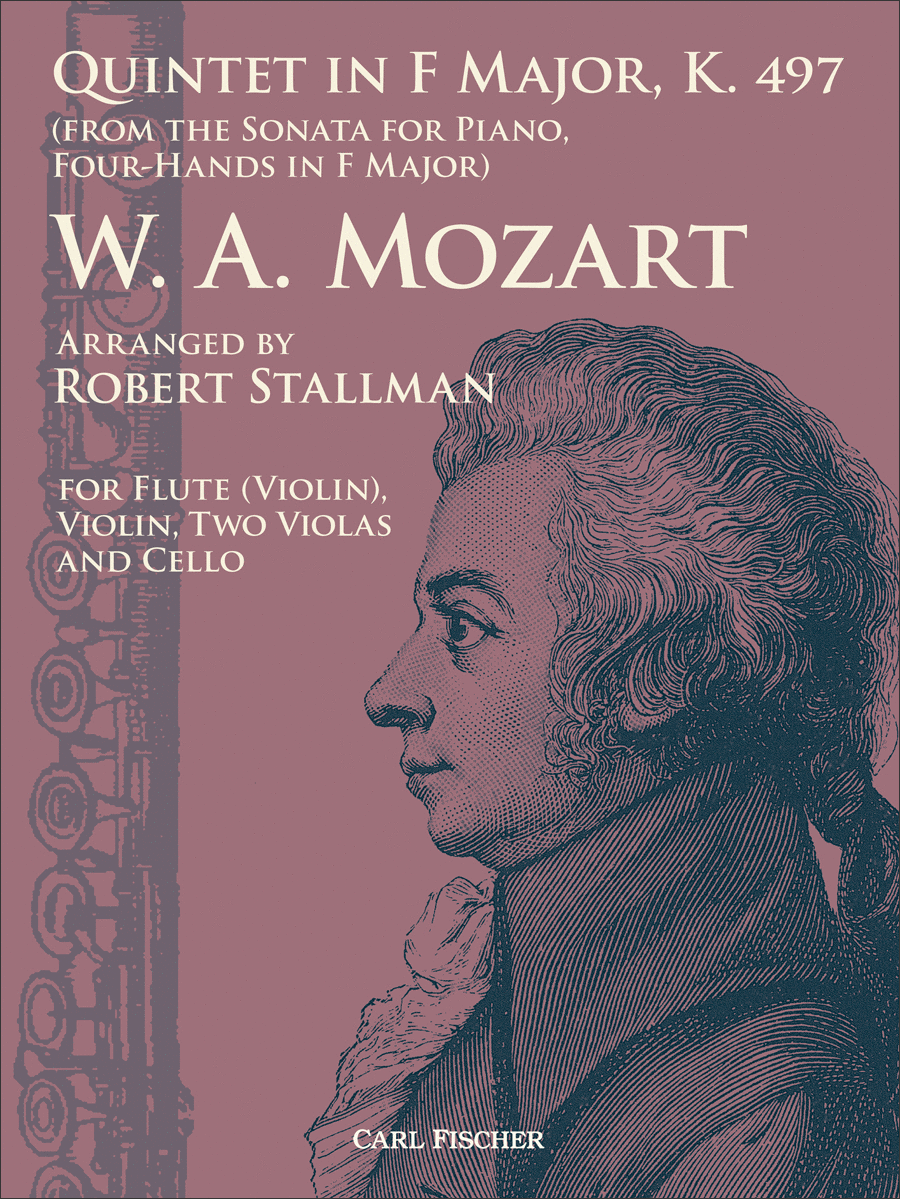
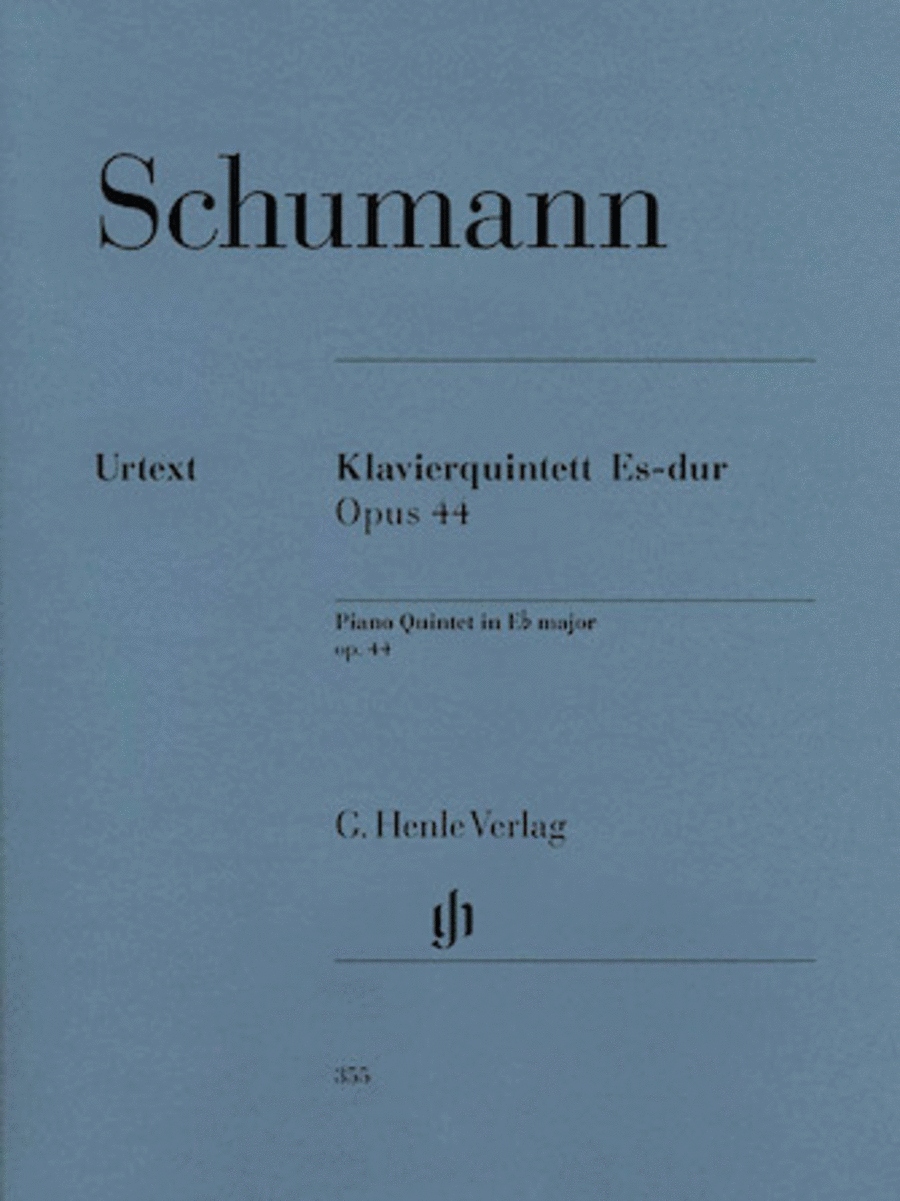

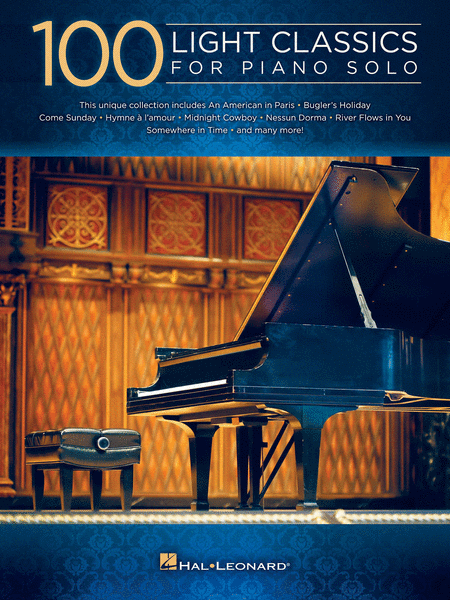
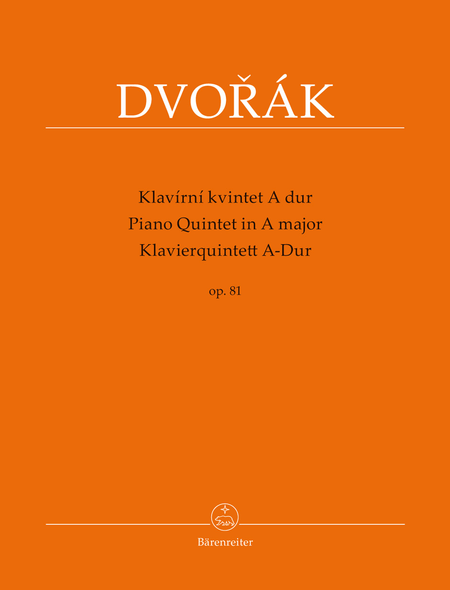
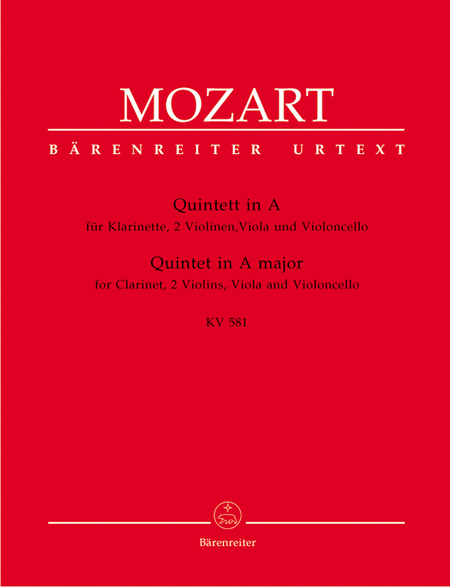
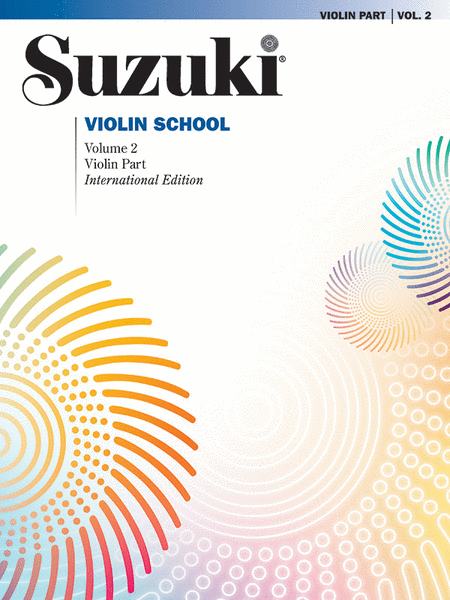
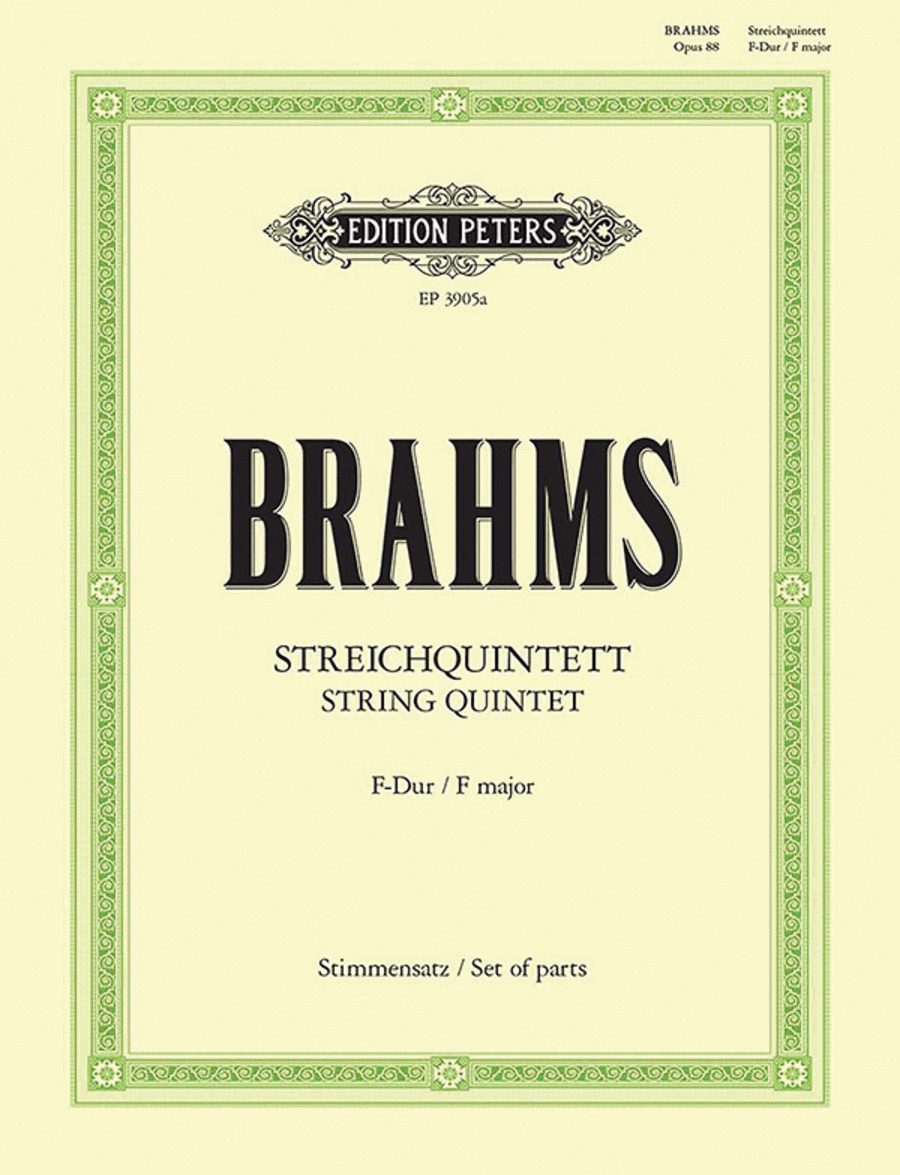
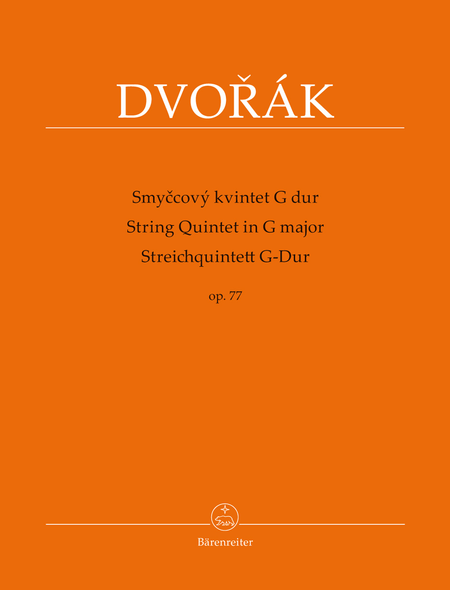
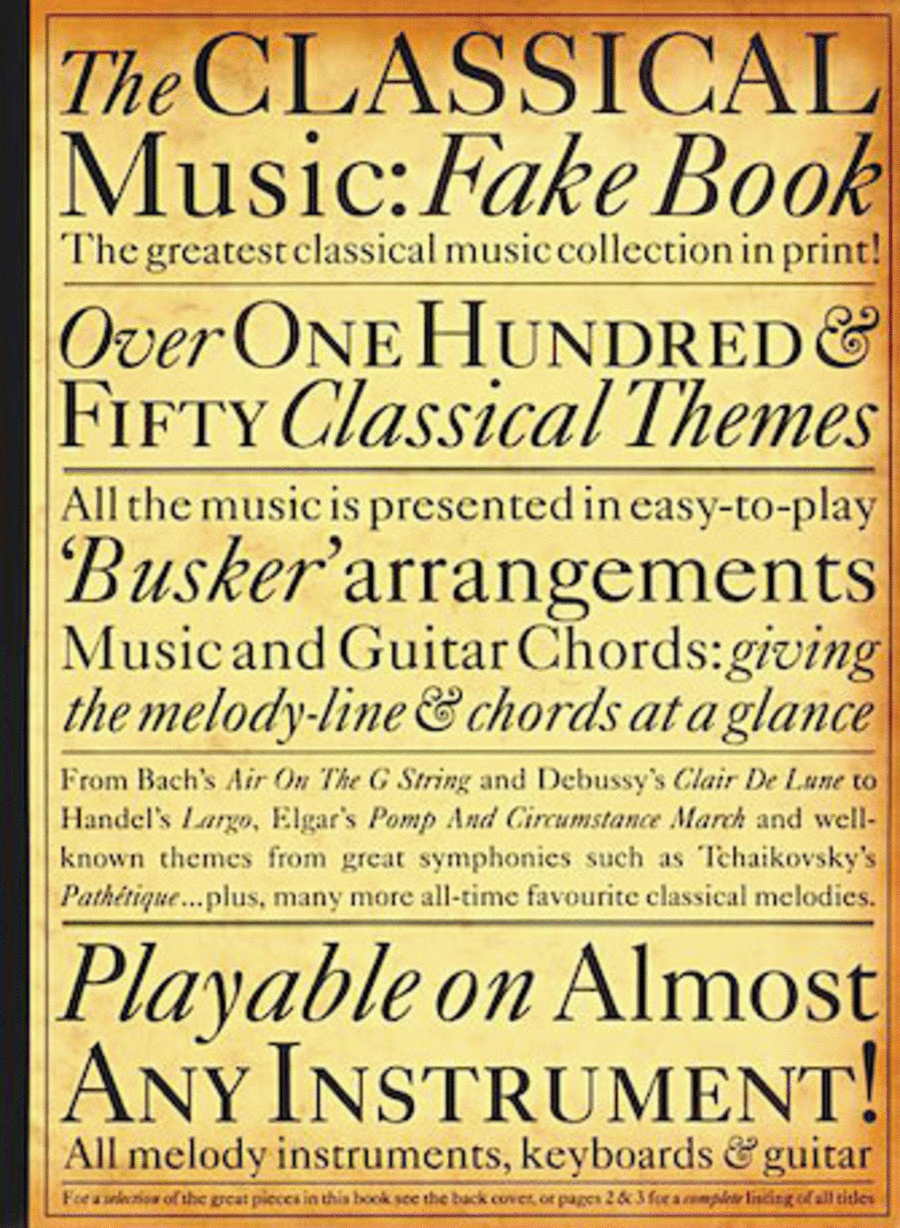
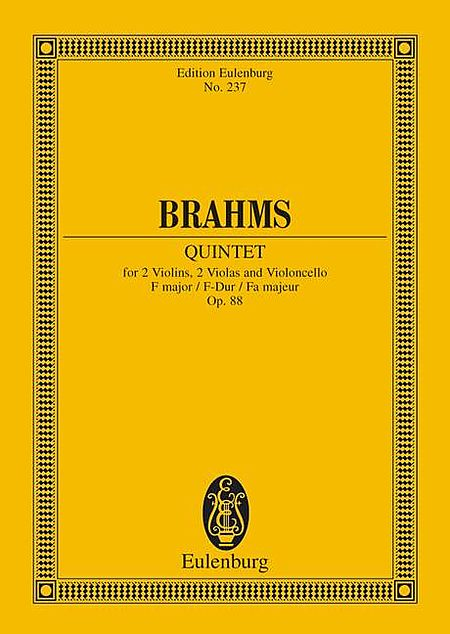
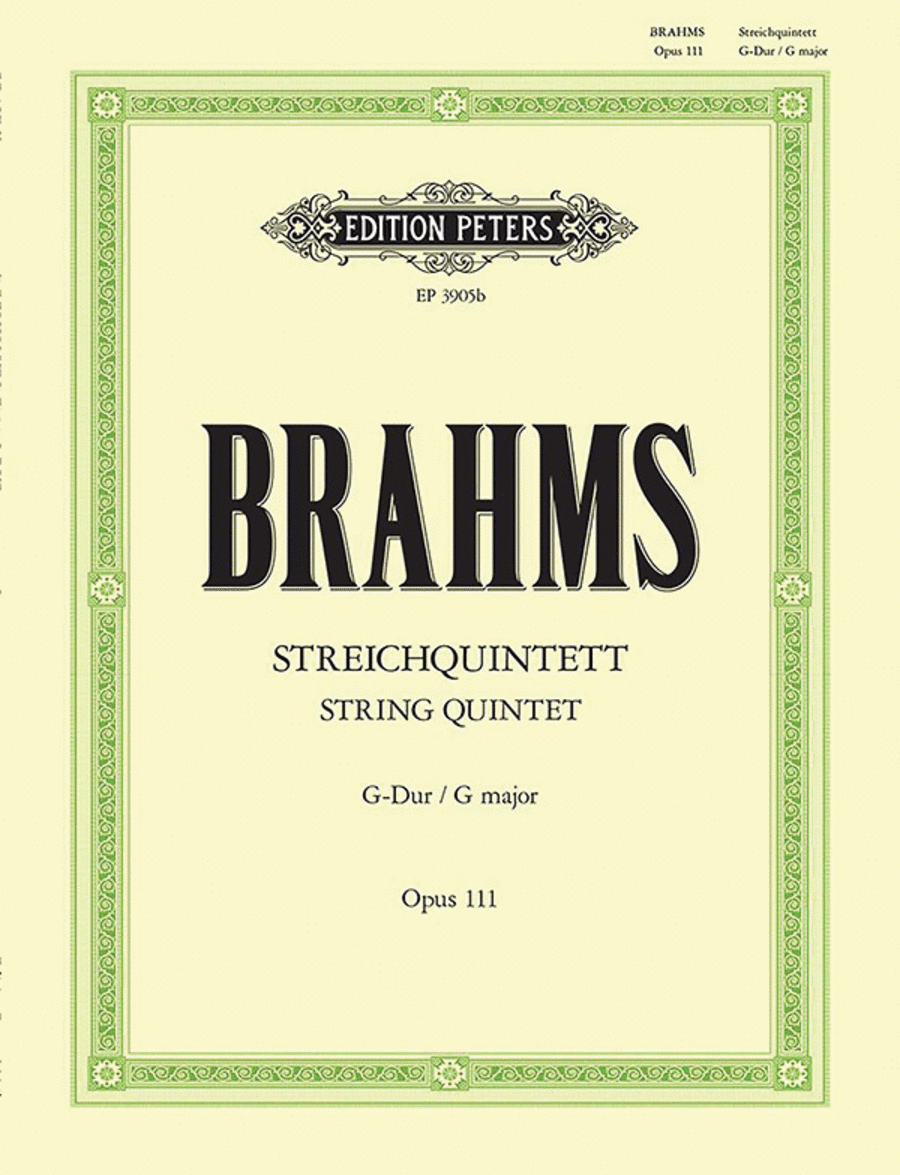
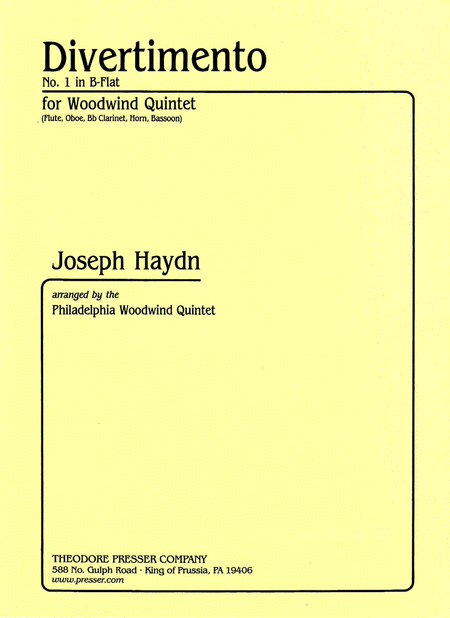
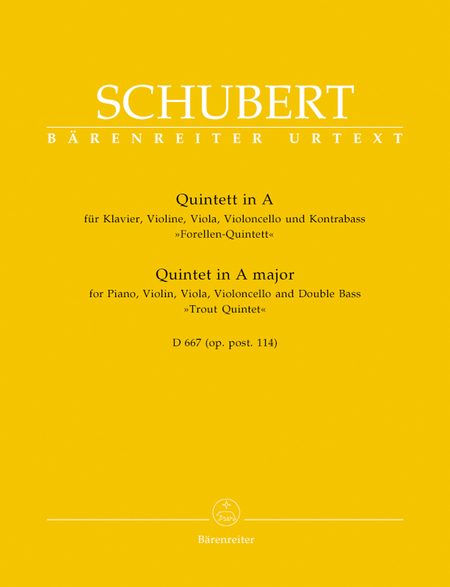
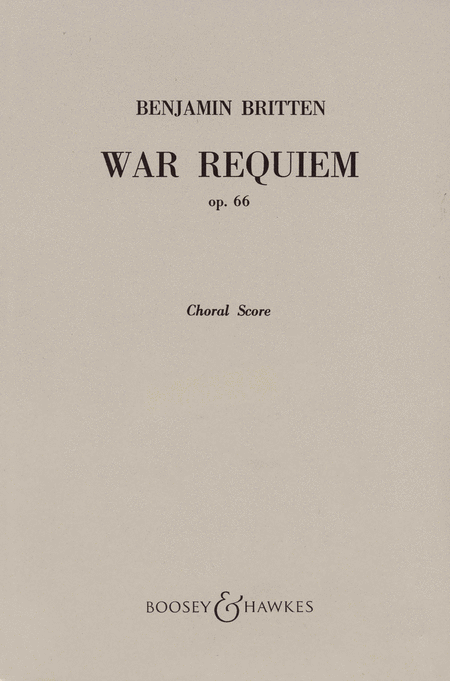
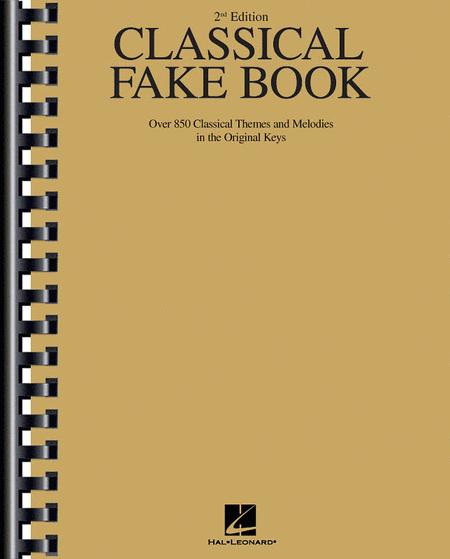
![Franz Schubert: Quintet for Piano, Violine, Viola, Violoncello and Double Bass A major op. post. 114 D 667 [Trout quintet]](https://www.sheetmusicplus.com/dw/image/v2/BJFX_PRD/on/demandware.static/-/Sites-smp-main/default/dw29451f7c/images/884/3770884_cover-large_file.png)












